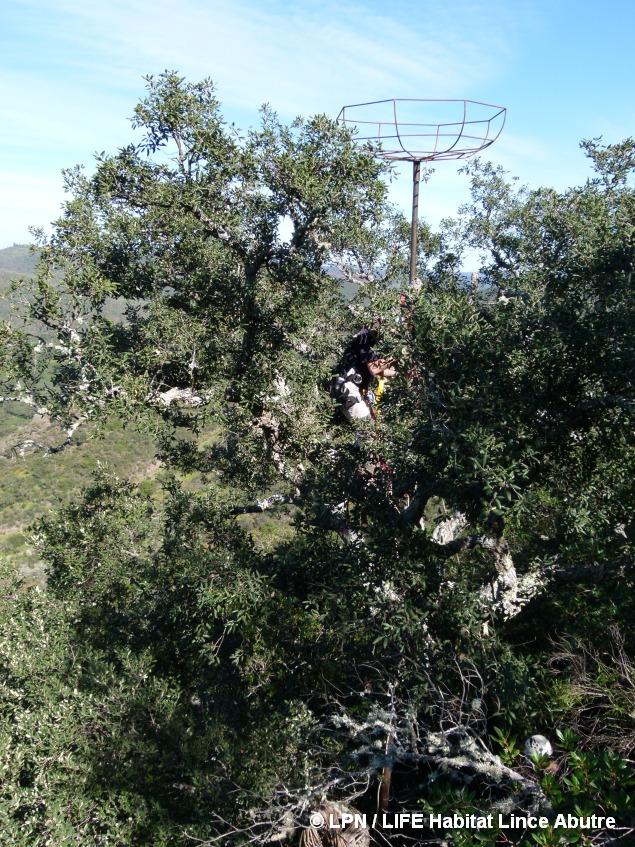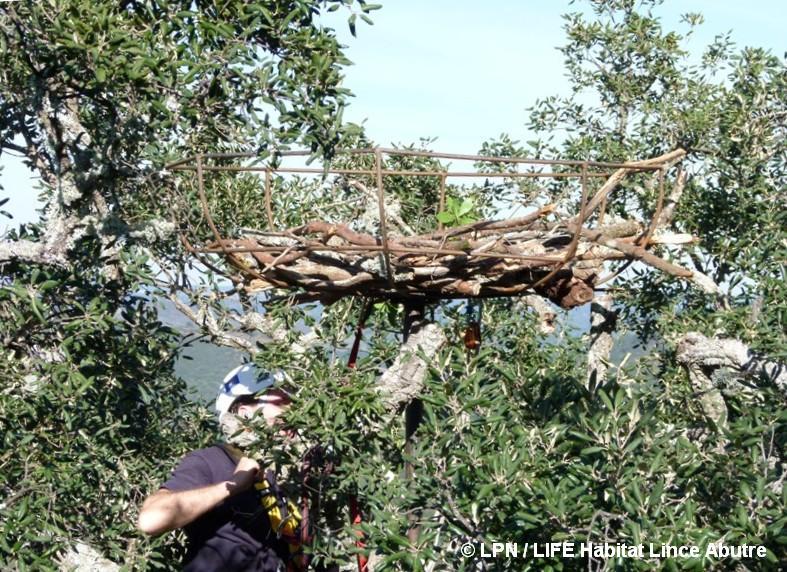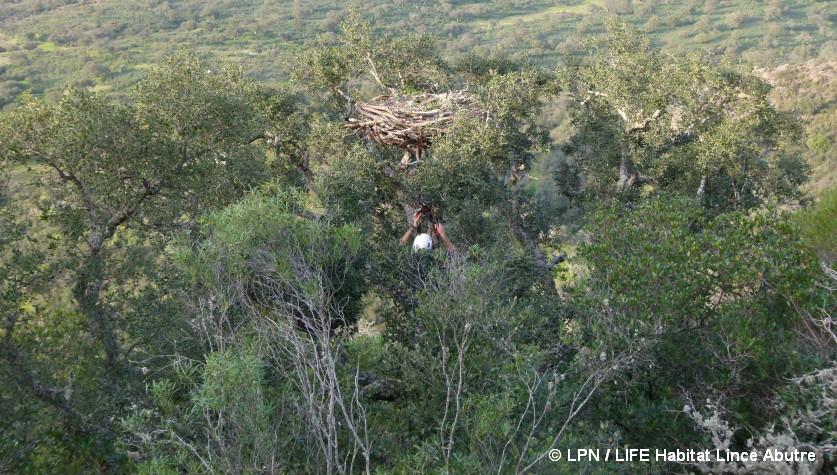First artificial nests for Black Vulture already installed!
On last February 23, it was installed the first of a series of artificial nests for
Black Vulture (
Aegypius monachus) that will be constructed in a private estate in the region of Barrancos with which a management agreement was recently established under the Life Habitat Lince Abutre project.
The first phase of this measure consisted in the identification of areas that gather the adequate characteristics for this species to nidify, both in terms of surrounding habitat and tranquility, and compatibility with the human activities taking place at the estate. During the first weeks of 2011, the Project’s team had
selected in the field the best trees (namely holm oak
Quercus rotundifolia and cork oak
Q. suber) to house the nests, and which will have to be capable of supporting approximately 200Kg (the Black Vulture is considered the largest bird of prey in Europe, with up to 3 meters wingspan).
With the trees previously selected, CEAI’s team in the Project began the nests’ installation. Each nest platform consists of 3 adjustable iron columns that form the nests’ base and to which an iron basket (that will shape the nest itself) will be attached. The first step of this structure’s installation is to hook all the metallic parts and secure the base of the column to the ground using metallic pegs. The column, in an upright position, will lean against the tree trunk, to which it will also be hold. The height of the nest’s basket is regulated so that it stays at the level of the tree’s canopy top and the basket in then filled with plant materials (sticks, branches) collected nearby the tree.
During the beginning of March, the installation of this series of artificial nests will be completed, becoming available to be occupied by Black Vultures that roam the skies of the region. With these and other artificial nests that will be constructed during LIFE Habitat Lince Abutre, it is expected to create conditions for the settlement of this important scavenger bird, a crucial element in the Mediterranean ecosystem, in estates and hunting areas with which management agreements are being established.
The team of LIFE Habitat Lince Abutre will keep you informed about the results of this measure, including on the bird species observed near and over the nests. Stay tuned!
Would you like to participate in this and other actions of this Project?
Become a volunteer! See
here how to contact us.




Did you know that …
• The female of Black Vulture lays, almost always, a single egg between February and April.
• Since 1970, the Black Vulture does not successfully reproduce in the area of intervention of this Project (Southeast of Portugal).
• Black Vulture is useful to humans, removing from the field carcasses of wild and domestic animals with no risks and efficiently.
• The limiting factors for the settlement and reproduction of Black Vultures in Portugal include the lack of suitable places to construct nests, disturbance during critical periods of its breeding cycle and the scarcity of food resources. All these factors will be mitigated by implementing specific measures envisaged in this Project and with the cooperation of landowners, managers and hunters in the field.
 Black Vultures Aegypius monachus (left) and one Griffon Vulture Gyps fulvus (right)
Black Vultures Aegypius monachus (left) and one Griffon Vulture Gyps fulvus (right)